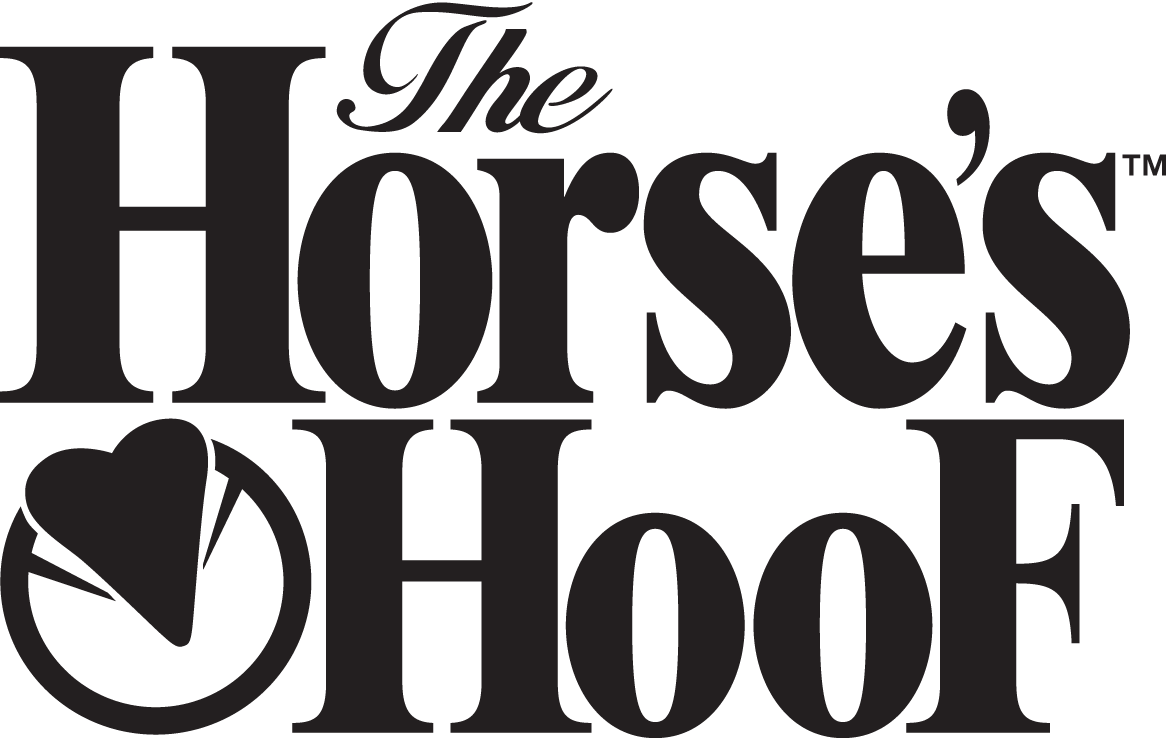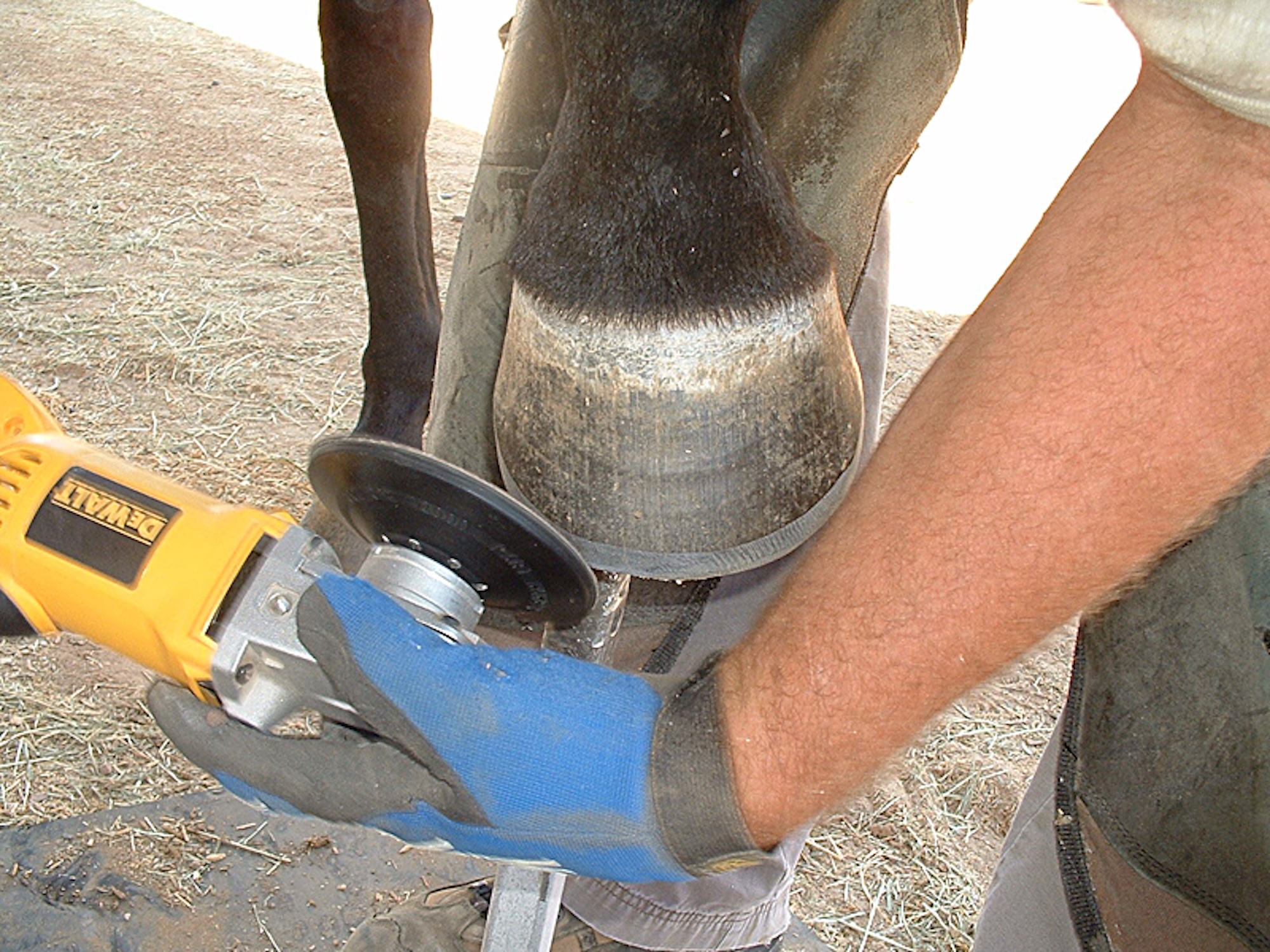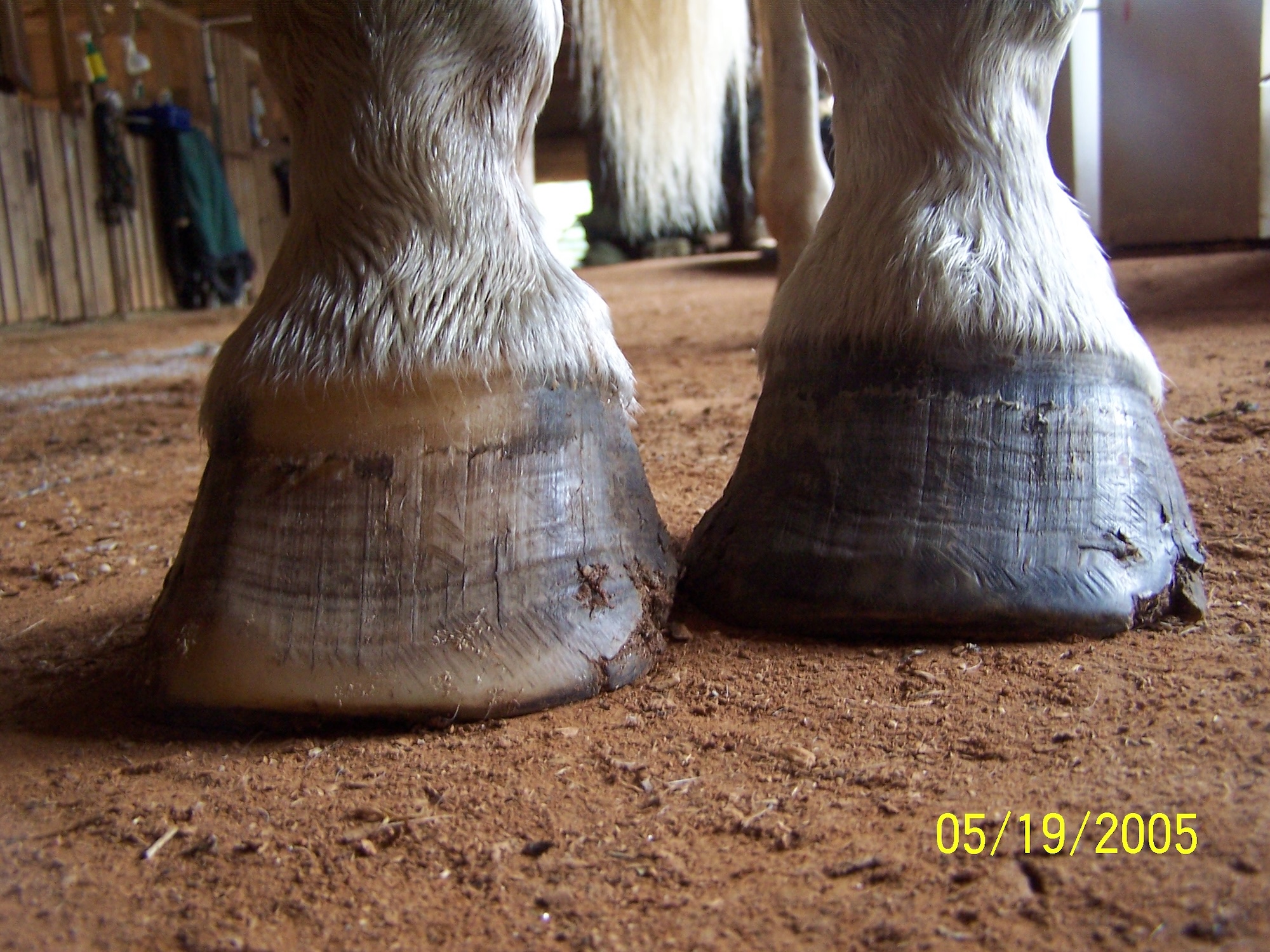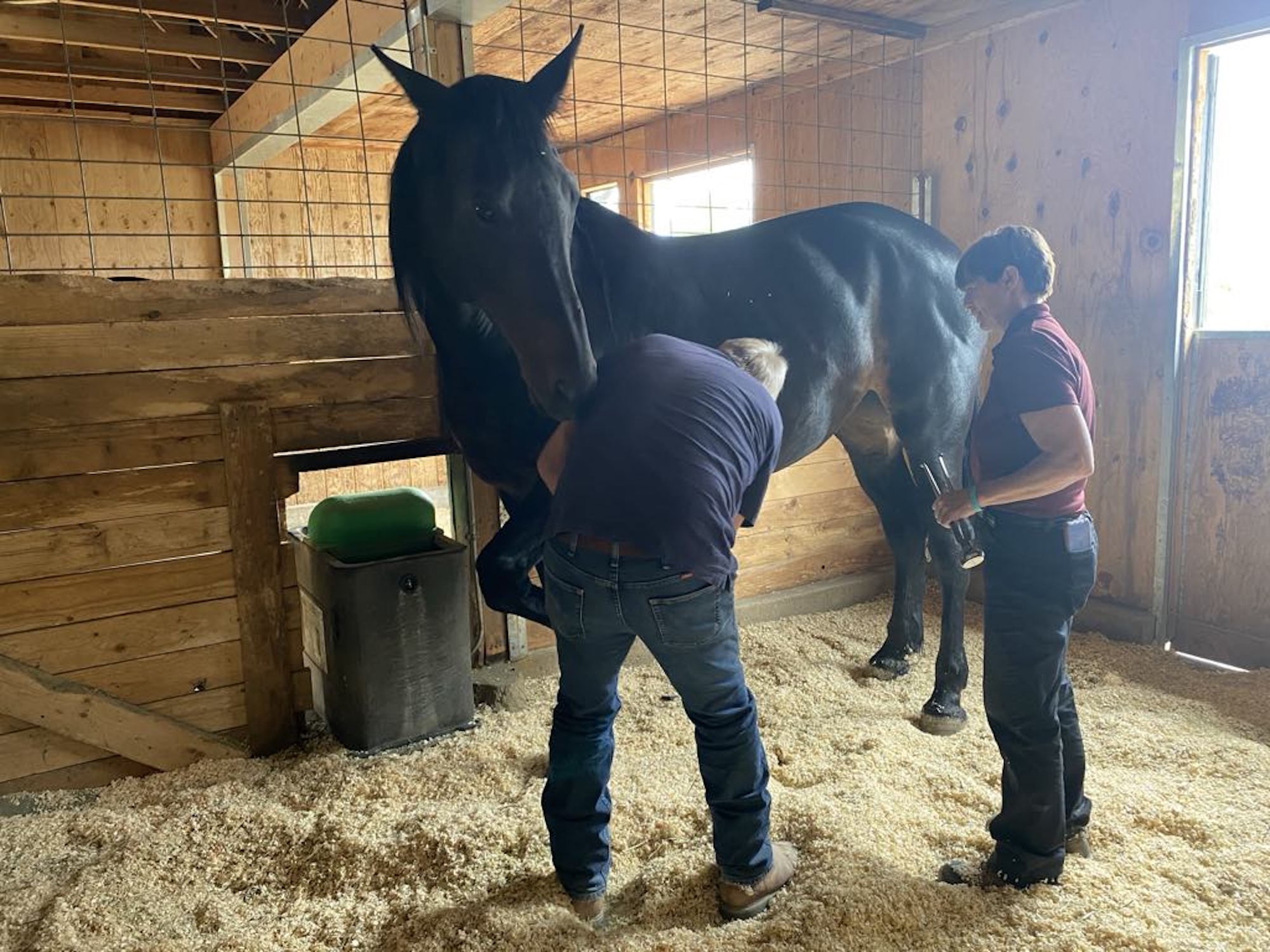This article is not an attempt to teach a specific trimming method nor suggest how you should trim. It is simply an introduction to the power tools that I use, the handling of the tools, the areas of the hoof that can be trimmed using the tools, and a few safety tips. I prefer using cordless tools, because I am on the move constantly. You can also trim with a less expensive corded tool; however there is always a safety concern with an electrical cord around horses.
The Tools:
Dewalt Cordless Cutoff Tool (Angle Grinder)

Shown here with battery pack attached, along with a Dewalt Backer Pad (left), and an aluminum oxide 24 grit abrasive pad (right). This tool performs many of the tasks of a conventional rasp. You can also try a less expensive Ryobi cutoff tool. (Note: All these tools are now available with longer-lasting lithium batteries – highly recommended!)
Ryobi Cordless Spiral Saw

Above, with attached battery pack, along with a fluted “Champion” brand Carbide Burr #SF-5. (I use Burr #SF-5NF, but I do not suggest this burr until you become very experienced handling the tool. Handled improperly, it could cause serious injury to you or your horse.)
Safety Items
Please use safety glasses, and a sturdy, form-fitting pair of gloves. Loose gloves can get caught in the tools. You may want to wear a dust mask, as well – power tools kick up a lot of hoof shavings! I prefer to sit on a stool when I trim the front hooves, and hold the hoof in my lap (this is more comfortable for both you and the horse).
Introducing Power Tools to your Horse:
Just like with regular trimming, make sure you have a nice, safe, distraction-free area. It is preferable to have the horse held instead of tied. However, if I do need to “tie” a horse, I never hard-tie; I just wrap the rope around a pole a few times to give some resistance.

Many people prefer to let the horse look at and/or sniff the tools. I find this doesn’t work. Mostly, it is about the trimmer’s confidence, and not the horse’s apprehension. Even with a new horse, I usually just start right in, and the horse is fine. Your own confidence will give the horse confidence; the horse won’t be afraid if you’re not, in most cases. However, there are exceptions to this rule, so go slowly, and be safe.
If the person holding the horse is nervous about the tools, they will communicate this to the horse. The way to work around this is to distract that person long enough to get started!
Before Photos:
(photos were taken after the very outer wall was shaped, but rest is untrimmed).


Note that I always have BOTH hands on both the tools. It is very hard to use the tools with only one hand and still guide them properly. It helps to be ambidextrous! You will need lots of practice to feel comfortable handling the tools. Everything that follows is only a suggestion, and you will have to experiment with your own body mechanics.
I always position the tool so that the hoof shavings and dust spray away from myself and the horse. It is not fun to have a mouthful of hoof!
Using the Angle Grinder on the Outer Wall:
The angle grinder can be used just like a rasp to shorten, shape, round, bevel, and smooth the outer hoof wall. Be careful to always keep the tool moving—otherwise it may heat the hoof excessively, or gouge.
Use two hands to keep the angle grinder steady as you make a sweeping motion around the toe. As you approach the heel, be very careful of the hairline; your horse will not appreciate getting his hairline abraded.



Using the Angle Grinder to Shorten the Heels and Scoop the Quarters:
Shortening the heels is a breeze with a power tool! Simply shorten and balance the heels with the angle grinder, just like you normally trim using a rasp. Both hands balance the tool, while my knees steady the hoof in my lap.
You can also use the angle grinder to scoop the quarters, or anything else that you might do to the bottom of the hoof wall with your rasp.



However, don’t throw away your knives! For some things, hand tools are still the best choice.

Using the Spiral Saw and Carbide Burr:
You need to learn to use these tools with both hands! Below, I am trimming a right hoof – notice my left hand controlling the tool, while my right hand both steadies the horse’s hoof, and provides a pivot point for the power tool. When doing the other side of this hoof, I switch hands.

Safety note: If the bit gets too close to the palm of the glove, it will grab the glove and wrap it up into the bit. This does hurt! Do NOT panic, simply turn the tool off! If you make the mistake of letting go of the tool, it will flail about wildly, spooking you and the horse, and possibly causing injury.
The tip of the burr can be used for small spaces, such as the sole-frog junction.
Below, I have switched hands. The broadside of the bit can be used to remove large areas of excess sole. Be conservative at first – you can always trim more later.

Below, the tip of the burr is being used to shape the bar.

After Photos:
The trimming of this single hoof, using power tools, took about 5 minutes. Total trim time for all 4 feet: 20 minutes.



Benefits of power tool trimming:
- Time savings. Trimming with power tools is so much faster than trimming with conventional tools. Developing power trimming skills should be very worthwhile for any professional, or any amateur with a large herd of horses.
- Makes easy work of hard, dry hooves. This was my own main motivation to begin exploring the use of power tools for trimming.
- Precision. When you become experienced with the power tools, you can be more precise – and remove less hoof – than you can with conventional hand tools.
- More natural. Abrasive trimming is probably more natural to a horse than removing large chunks of hoof with a knife.
James’ tool choices:
- Angle Grinder (“Rasp”): Dewalt Cordless Cutoff Tool or Ryobi 18 volt Cordless 4-1/2” Angle Grinder, with 4-1/2” aluminum oxide 24 grit abrasive pad.
- Spiral Saw (“Knife”): Ryobi 18 volt Cordless Speed Saw Rotary Cutter with fluted “Champion” brand Carbide Burr #SF-5 (or #SF-5NF ONLY for the very experienced!)
by James Welz, published in The Horse’s Hoof Magazine, Issue 21 (Fall 2005) & Issue 60 (Fall 2015)
See the full content listing of all issues of The Horse’s Hoof Magazine! We also provide instructions on how to read the issues for free on Hoof Help Online.
For a detailed listing of all articles on The Horse’s Hoof website, please visit our Article Directory.




